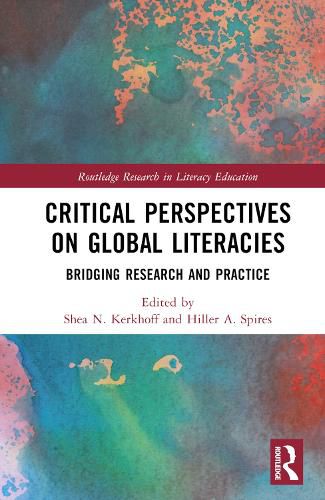Readings Newsletter
Become a Readings Member to make your shopping experience even easier.
Sign in or sign up for free!
You’re not far away from qualifying for FREE standard shipping within Australia
You’ve qualified for FREE standard shipping within Australia
The cart is loading…






This book offers critical perspectives on global literacies, connecting research, theory, and practice. An emerging concept in the literacy field, many scholars agree on the need for students to develop global literacies, yet few agree on a widely accepted definition. Based on a synthesis of the literature, the editors formulate a definition of global literacies with four dimensions, including: literacy as a human right in all nations around the world; critical reading and creation of multimodal texts about global issues; intercultural communication and reciprocal collaboration with globally diverse others; and transformative action for social and environmental justice that traverses borders. Taking this shared, proposed definition as a starting point, the chapters then offer contextualized examples of global literacies from K-12 and teacher education classrooms to make explicit links between research and practice. The contributors interact with and interrogate the book's definition of global literacies using a common framework of critical theory. As such, this book provides both emerging and established scholars with critical frameworks for positioning global literacies in ways that are relevant, dynamic, and forward thinking.
$9.00 standard shipping within Australia
FREE standard shipping within Australia for orders over $100.00
Express & International shipping calculated at checkout
This book offers critical perspectives on global literacies, connecting research, theory, and practice. An emerging concept in the literacy field, many scholars agree on the need for students to develop global literacies, yet few agree on a widely accepted definition. Based on a synthesis of the literature, the editors formulate a definition of global literacies with four dimensions, including: literacy as a human right in all nations around the world; critical reading and creation of multimodal texts about global issues; intercultural communication and reciprocal collaboration with globally diverse others; and transformative action for social and environmental justice that traverses borders. Taking this shared, proposed definition as a starting point, the chapters then offer contextualized examples of global literacies from K-12 and teacher education classrooms to make explicit links between research and practice. The contributors interact with and interrogate the book's definition of global literacies using a common framework of critical theory. As such, this book provides both emerging and established scholars with critical frameworks for positioning global literacies in ways that are relevant, dynamic, and forward thinking.